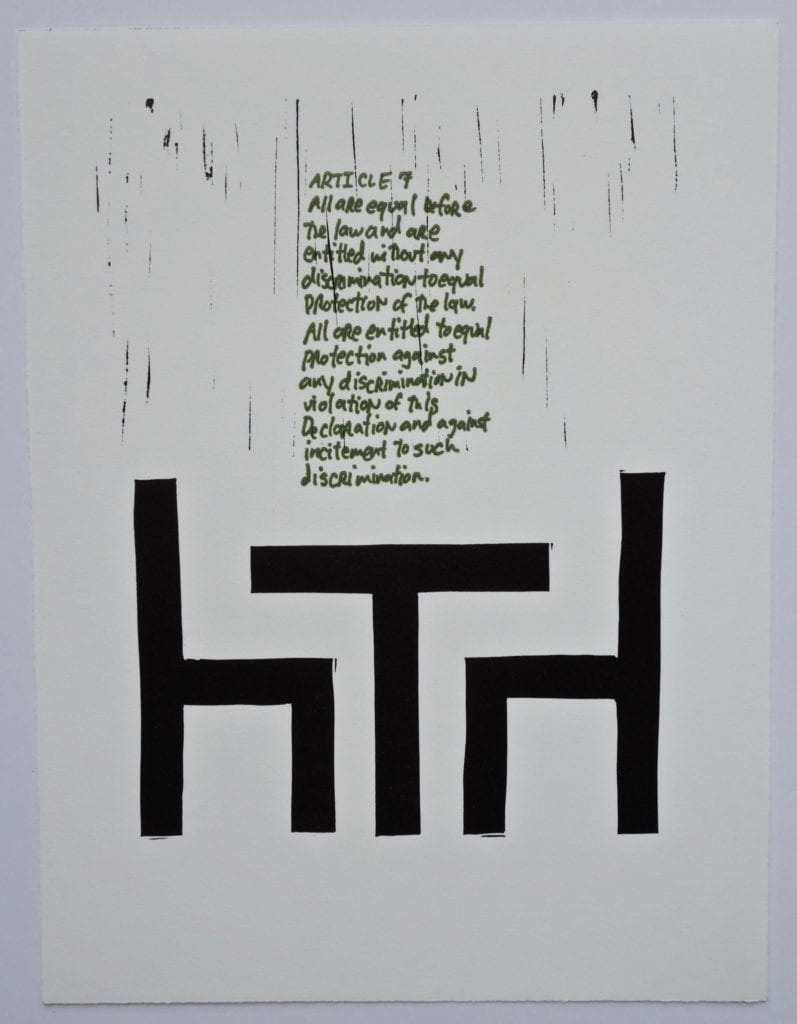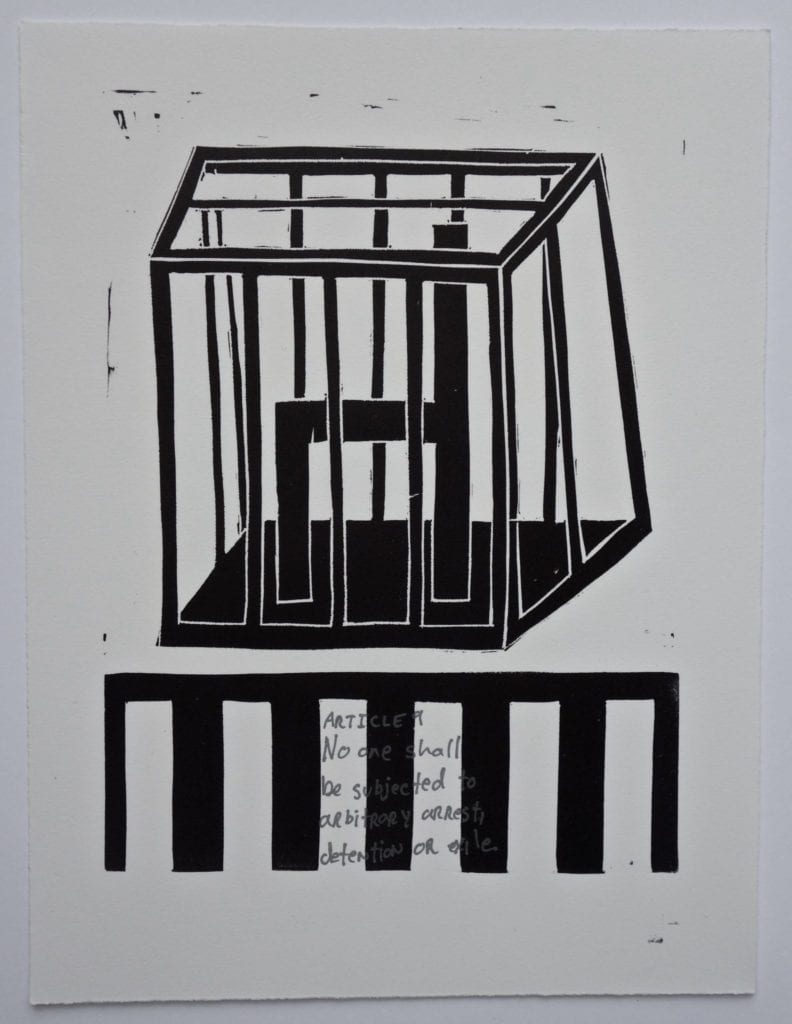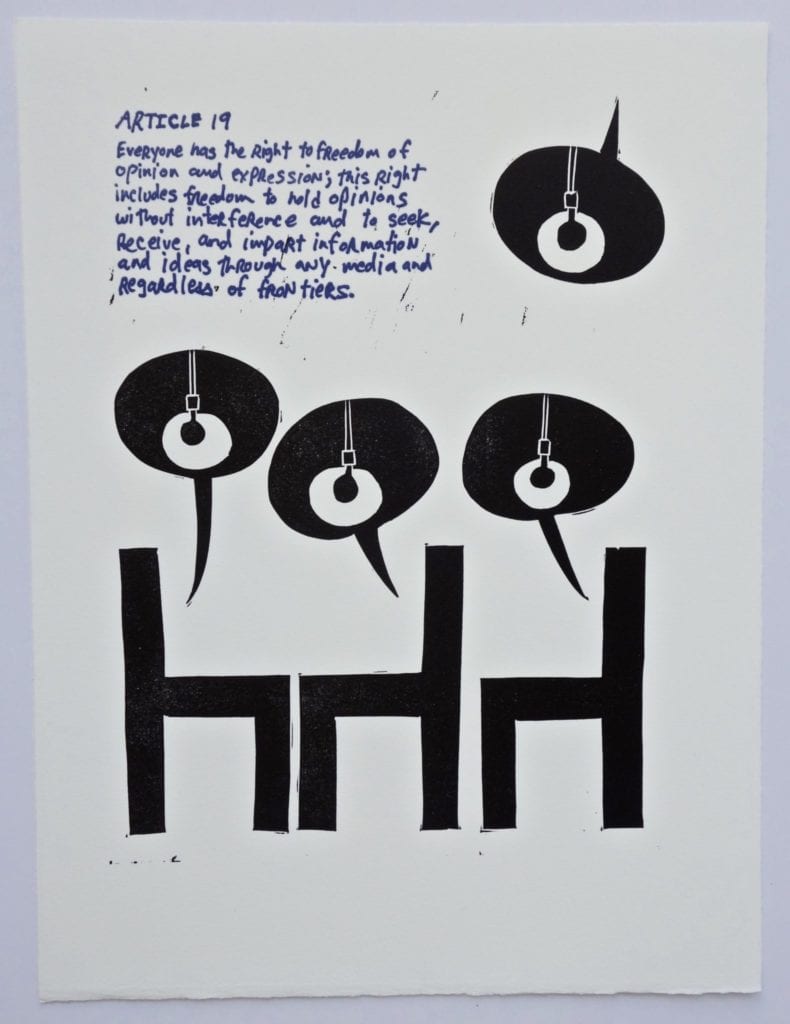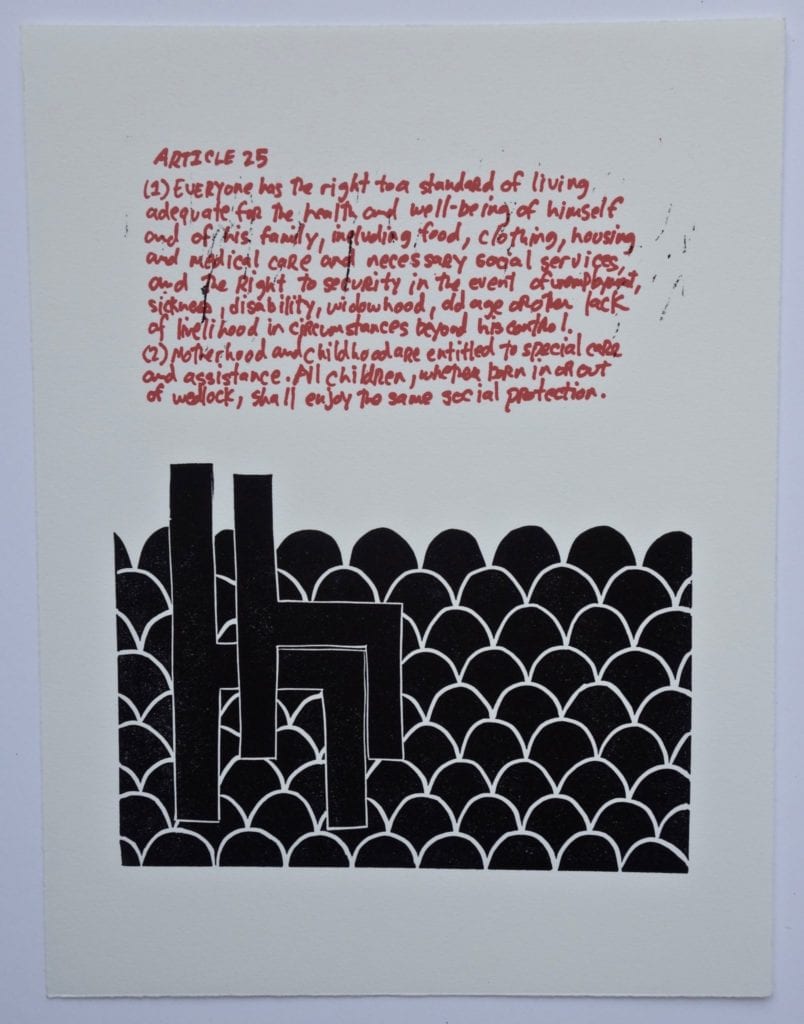We look forward to exhibiting at the Brooklyn Book Festival this Sunday 9/16, booth 613, from 10am-6pm. Holly Mitchell and I will be there, with books from our friends and clients Banipal, Rescue Press, West Virginia University Press, and Zone, as described in this blogpost that we placed on Foreword Reviews.
We are also pleased to feature prints that depict each article of the Universal Declaration of Human Rights, a project that I worked on with my wife, Isabel Brito Farré. The prints are linoleum cuts for the images and photopolymer plates for the text, printed on a Vandercook proof press. Each set is 31 articles, and it’s an edition of 20. Isabel made linoleum cuts of the images and I transcribed by hand the article text to make the plates. They were printed at The Arm in Williamsburg. Four examples are below.
For historical background, this year marks the 70th anniversary of the drafting the UDHR, a document that was written to express individual’s rights and prevent the atrocities of World War II from happening again. Representatives from seventeen nations were on the committee that drafted the document, with Eleanor Roosevelt, René Cassin, and John Peters Humphrey having key roles in the process. The UDHR was a response to the end of World War II, but in the language that was used, the drafters hoped to keep the document free from ideology, as Johannes Morsink notes in his book The Universal Declaration of Human Rights (Penn Press 1999):
Given that World War II was fought to make the world free for democracy, it is certainly odd that the noun “democracy” never occurs in the Declaration at all, not even in the Preamble, and that the adjective “democratic” occurs only once, in Article 29, paragraph 2. The same query arises with respect to the terms fascism and Nazism…Ideologically the Declaration is a very bare document; it mentions neither the winning ideology (democracy) nor the losing one (fascism). The reason for the absence of these terms is that they got caught up in the rhetoric of the Cold War. This rhetoric distorted their meaning and made them unsuitable for use in a document that was designed to be acceptable to all the participating delegations.




